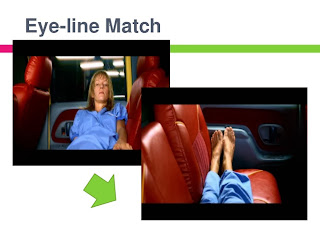Editing in early Cinema
In this task i will explain how editing has developed and evolved in the early stages of film making. I will also explain how each film maker contributed to the development of editing.
Thomas Edison
This is a clip from one of Thomas Edison's greatest films "The Electric Light Bulb". This invention is known as one of the most famous inventions which makes it one of the most important landmark moments in editing history. Thomas Edison introduced a new era to become great history. This is important because it alerts people of how to create something new and gain good knowledge from it and this clip shows exactly that.
The lumiere bros are praised for being the first filmmakers in history and introduced their first ever film. They began this process by inventing their very own device, by combining a camera with a printer and a projector and with this combination they named it the 'Cinematographe'. This technology was a newly introduced style for the people which meant that other people could even adapt from an idea like this and create more films like these. For this reason being, the Lumiere Bros not only gained popularity in what they did but introduced outstanding inventions which are a huge part of film today. This is a very short and simple clip and because of its simplicity, it gave people an insight to something new that they've never seen before.
G.A. Smith
The Miller and the Sweep
Similar to the the Lumiere bros, G.A Smith created a very short and simple film. The film contributes to introducing new film making. My reason for saying this is because the only type of shot we see is a still shot that only focuses on the subjects and even though the subjects move around a lot in the film, the camera stands in a position where it can include everything it needs. This clip is effective because of the humour that is added to it and something like this would be exciting for the audience as they've never seen a humorous film before. Based on this reason, this type of comedy genre developed at this stage.
The kiss in the Tunnel
G.A Smith also created this clip called "The Kiss in the Tunnel". Based on his work before, he gradually showed improvement in filming. For instance, unlike the still shot he used in the previous example above, he used a point of view shot, following the action and a still shot. All these shots make the film look more effective and also active, this is because the audience begins to see more movements going on not just based on the actual characters but also the camera's movement too. This is what makes it so important as it creates more of a meaning for the film.
George Melies - The Vanishing Lady
George Melies - The Vanishing Lady
George Melies creates a variety of genre's such a documentary, short film and silent film. In this clip you can see that it is a silent film and short film. What George Melies does is he walks onto stage and brings out his assistant spreads newspaper on the floor and puts a chair on top. She sits down then places a cloth on top of her, removes it then she is gone but then once he waved his hands in the air a skeleton appears. He again, places the blanket on top, of the skeleton then removes it off. We then see his assistant again then they both walk off stage. This film introduced entertainment but also magic. Films back then were rather plain, simple, and had a basic story line, but here George Miles created a short film, with no sound and still somehow in some way won over the audience's attention.
Edwin S Porter - The Life of an American Fireman
Edwin S Porter was an American film pioneer, and is best known for the director of Thomas Edison's company. He created over 250 films but most important films are the 'The Great Train Robbery', and 'The Life of an American Fireman'. Similarly to the other examples I have explained above, this film has no sound however it is longer than most. Already we can see that because of the length of this film there must be a meaningful story line. Even though the shot techniques were basic it was shown that the camera was moving around more often, showing the audience what exactly is going on. This introduced different shot techniques to early cinema.
The Great Train Robbery
Edwin S Porter also created this film 'The Great Train Robbery'. As you can see, the first change we see in Edwin S Porter's filming is that he developed his filming by including sound. The type of sound included in the film is very loud and pressuring, causing a lot of tension on the audience. He introduced sound, and a use of good timing in the film and because of this the audience gains an emotional and personal response to the film.
Charles Pathe - The Horse that Bolted
Charles Pathe was a French pioneer of film and recording industries. He also invented the newsreel that was shown in theatres prior to a feature film. Straight away when hearing the music added in the clip, the audience will have an idea that the film is humorous. This will make them want to watch it and know what this humorous clip has to offer. To show the variety of different scenes, the camera continuously cuts in different scenes to put together the film, and because of this cross cutting technique it makes the film flow and not just run though for about 2 mins. This shows a change in editing in terms of how films should now look like and now be structured.
















